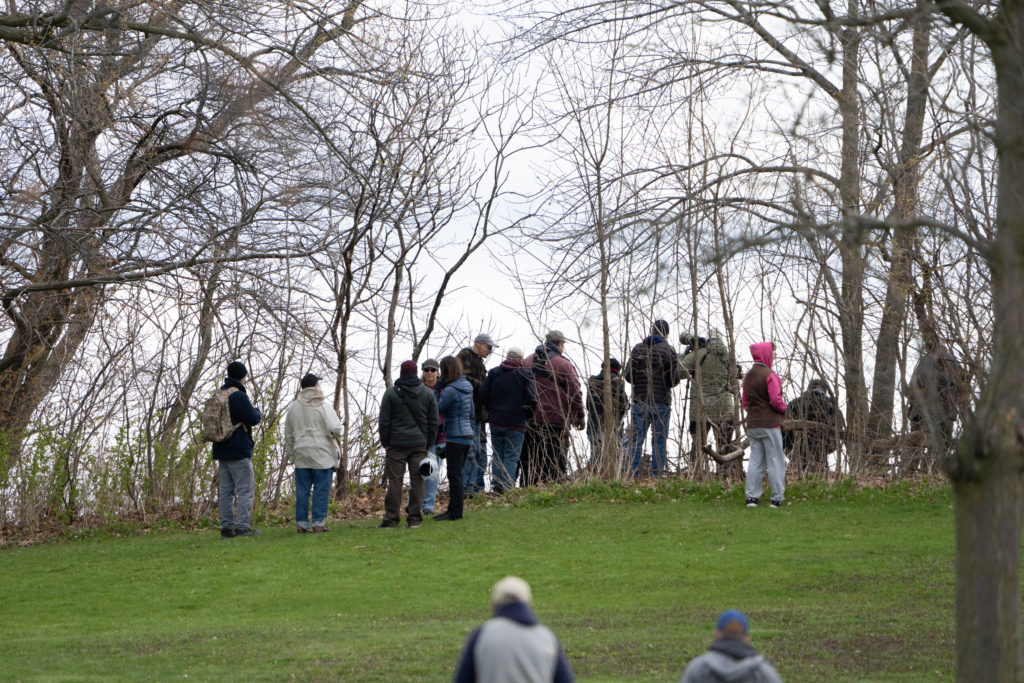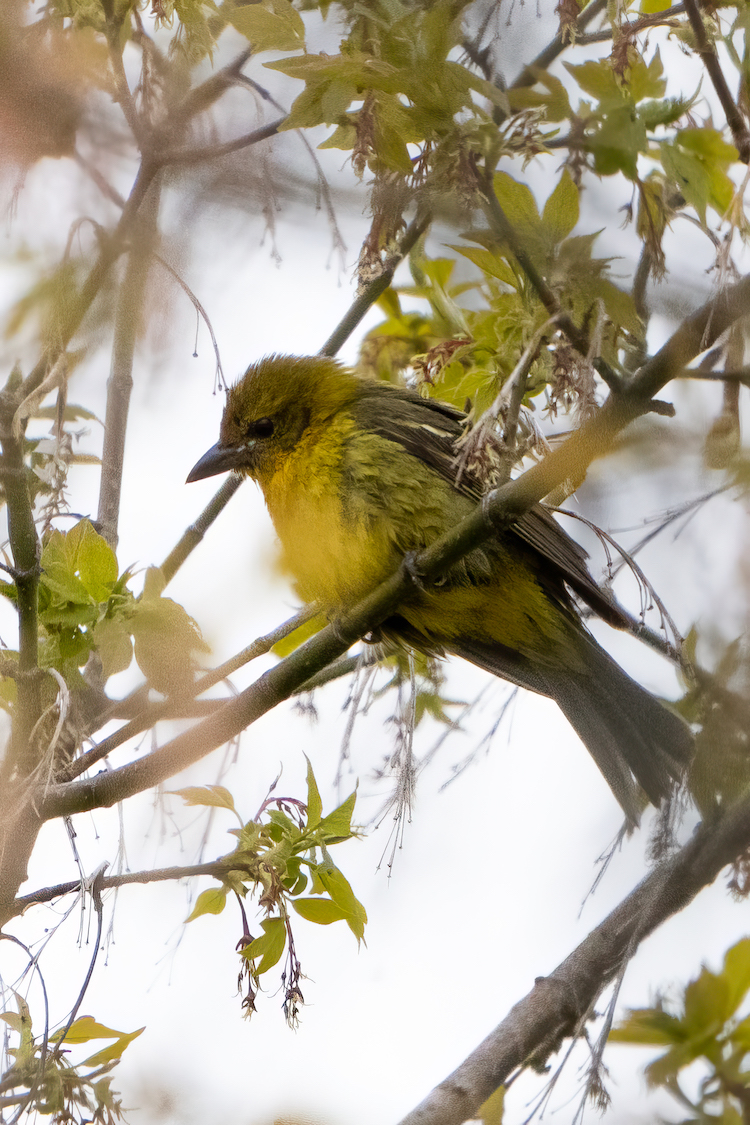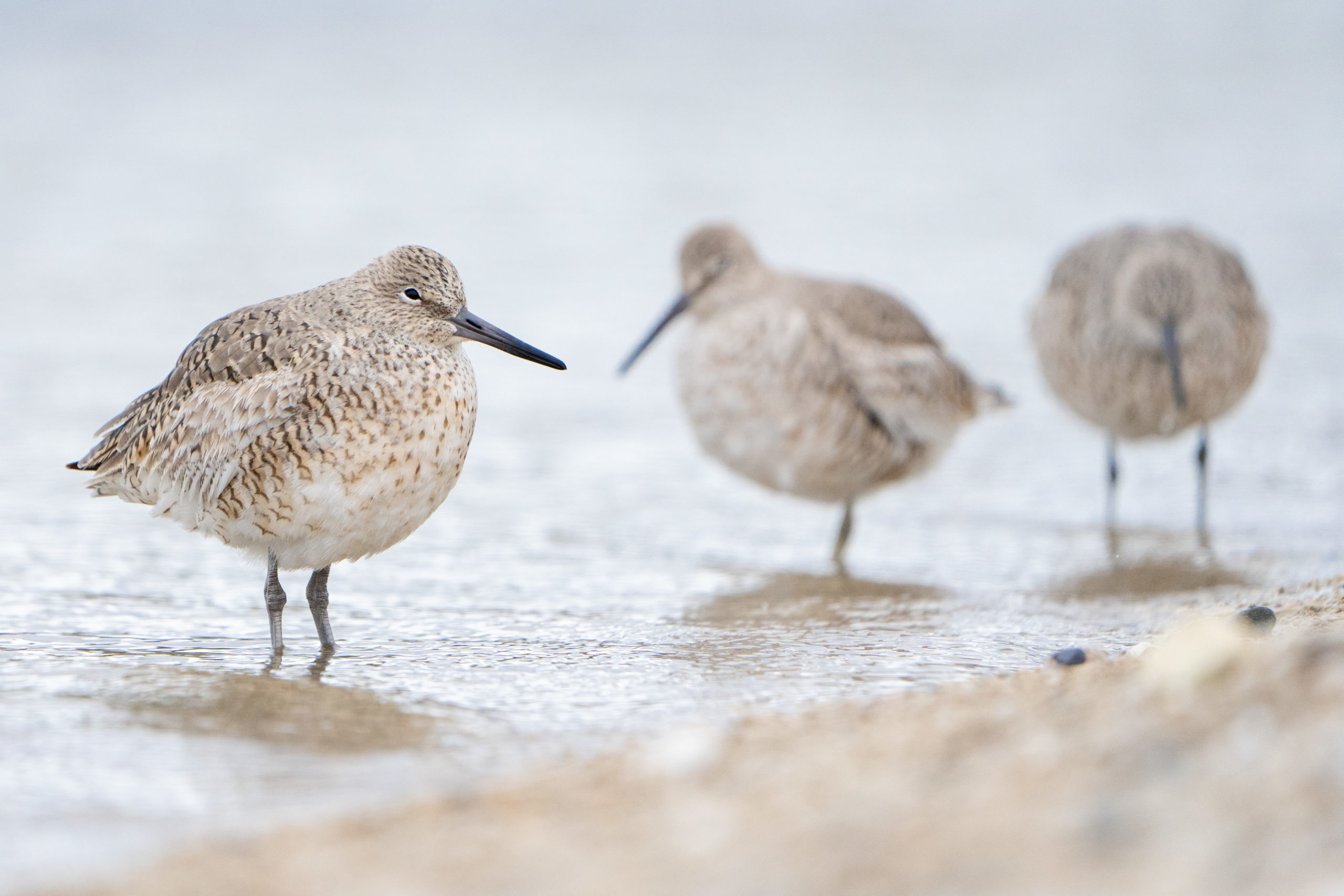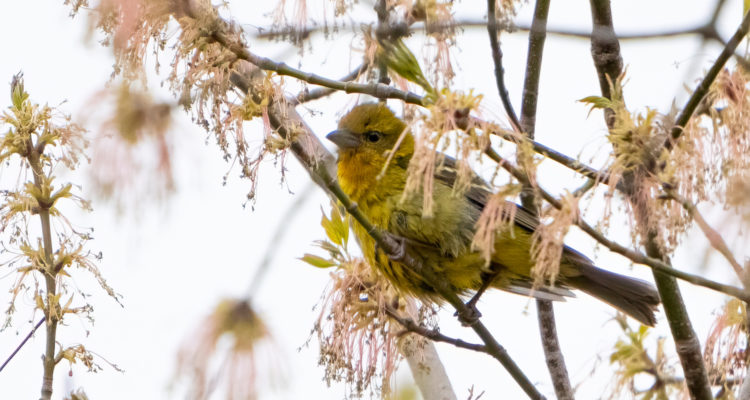My wife let out an audible gasp as we pulled up to Cudahy’s Sheridan Park on Sunday. Dozens upon dozens of cars filled the streets. “Don’t worry. There’s gotta be something else going on,” I remarked. “There’s no way everyone’s here for a bird.” I was proven wrong.

Very wrong.
Over the course of the day, eBird logged 122 reports at Sheridan Park. The reports all had one thing, and one species, in common: the Flame-colored Tanager. This bird, which primarily feeds on insects, was found hunting alongside a few warbler species through a thicket of newly budding leaves. Its size, closer to an American Robin than a warbler, and bright yellow color (this was a female, the males are red) put on a game of hide and seek for the horde of onlookers that came to see the ultra-rare creature.
This is the first time the Flame-colored Tanager has been documented in Wisconsin. New species reach Wisconsin for the first time every year—in fact, those numbers have been going up. This is, at least in part, due to increased interest in birding, but also due to the effects of a warming globe shifting migratory and nesting activities for our feathered denizens. What makes this sighting particularly rare is the fact that the northern area of their territory is…Arizona. The species is a staple of Mexico and Central America, but its sighting in southeastern Wisconsin is a head-scratcher. Migration blows birds off course all of the time, but 1,500 miles, of course, now that’s a shift.

As of this morning, the bird has been spotted bearing through the unseasonably cold weather. If you decide to look for it, please be respectful of both the bird and other birders. A bird this far off course is sure to be stressed. Keeping a distance and voices down will allow it to go about its day-to-day feeding cycle with minimal impact on its well-being. If you see someone who has yet to see the bird, please point it out to them. It’s hard to predict if this sighting is one of many future sightings we’ll see of the Flame-colored Tanager. As of now, it stands as the only visit on record of this beautiful bird. Share it if you can.
On a side note: spring migration is in full swing. The next few weeks will be Milwaukee’s peak migration season, so it’s the best time of the year to attend a bird walk put on by your favorite local nature preserves. The Urban Ecology Center, Schlitz Audubon, and Wehr Nature Center are great resources. For the month of May, Wehr Nature Center is bringing in Paul Boyer, an expert in warblers, to lead early morning bird hikes. Additionally, you can find migratory birds just about anywhere, but especially along Lake Michigan. Yesterday, I stopped over at the South Shore Yacht Club to photograph three Willet. For what it’s worth they’re easier to spot than warblers.


